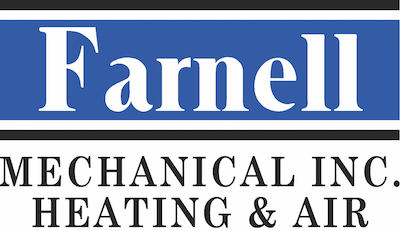Everyone’s always looking to save money on their utility bills, but it just so happens there’s a way to keep costs down, even when you’re out of the house.
The key is your thermostat. By making the most out of your thermostat, you can structure its daily schedule around your personal preferences. That means you can have different temperature settings for when you’re home, away or even when you’re asleep.
If you’re willing to make these adjustments, you’ll be able to enjoy comfortable temperatures while cutting down your energy bills. Check out our guide on how your thermostat doesn’t have to use up all your summer spending money:
While at Home
Whenever you’re at home, you want comfortable temperatures. That’s why it’s best to set your thermostat lower in the summer while you are in the house to make the most of the cool air.
But the most energy-efficient temperatures for when you’re in your home during the summer is actually around 78 and 80 degrees Fahrenheit. This way, you’ll keep cool while keeping your energy bill more manageable.
While Out of the House
When it comes to setting the temperature for a vacation or other trip away from the house, it’s extremely common to move the thermostat higher than normal.
If your home is in a shady spot in a cooler climate, you can set the thermostat to temperatures as high as 88 degrees while no one is home and then lower it back to the sweet spot of 78-80 degrees when you or a family member return. This way, your air conditioning system isn’t working around the clock to provide cooling for a bunch of empty rooms.
While Asleep
When it comes to sleeping in the summer, you want your thermostat set at a comfortable temperature. A great place to start is between 68-72 degrees Fahrenheit. This will keep you from getting too hot or too cold while you’re trying to sleep.
Additional Ways to Reduce Energy Use:
- Put in a smart thermostat: Using a smart thermostat in the summer is an excellent way to reduce energy costs since it can plan your temperature adjustments according to your lifestyle and home environment. They can lower the temperature while you are home or sleeping, while allowing it to get warmer when no one is home. Using reputed brands and models such as the Lennox iComfort, you can adjust the temperature remotely through your smartphone, tablet or laptop. Scheduling smart thermostat installation in your Auburn and Opelika home is an effortless way to set the correct temperature whether you’re at home or across the country.
- Upgrade your HVAC system: A new HVAC system saves money right from the start. With greater energy efficiency, your utility bills will be lower because it requires less energy to heat and cool your home. Air conditioning installation in Auburn and Opelika is only a phone call away, so don’t hesitate to reach out to local pros like Farnell Mechanical, Inc. who can set you up for success.
- Keep up with AC maintenance: Whether or not you keep up with regular air conditioning maintenance in Auburn and Opelika can have a big impact on your monthly energy use. By regularly cleaning the coils, checking for damage and keeping vents clear of dust and debris, you may notice your HVAC system perform better during day-to-day use.. Increasing efficiency also limits strain on important or delicate components and lowers operational costs, lowering total energy use and eventually the total monthly bill.
- Clean or replace the air filter on a regular basis: Regularly changing the air filters in your HVAC system saves money by helping air flow efficiently through your air conditioner. When filters are old and less effective, air conditioners have to work harder, and the strain can reduce the system’s life span and result in breakdowns.
- Check your attic insulation: Insulation is one of the key components in any energy-efficient home, keeping the hot air outside and the cool air inside through summer. The North American Insulation Manufacturers Association (NAIMA) recommends that homes in the southern United States should possess at least 13-14 inches of insulation, while states further north need 16-18 inches.
- Check your ductwork: Leaky ductwork can raise your energy bills much more than 20 percent, plus it can also lead to problems with your water heater, clothes dryer and other appliances to get into the atmosphere of your home. Finding any leaks fast and sealing them can address both concerns.
- Seal all other leaky spots in your home: Sealing up other leaks in your home with caulk, foam sealant or weather-stripping keeps temperatures a little cooler on hot summer days. You should also check for any gaps around windows, doors and even outdoor fixtures. Taking the time to seal up any leaks now can help you save a lot over time.
